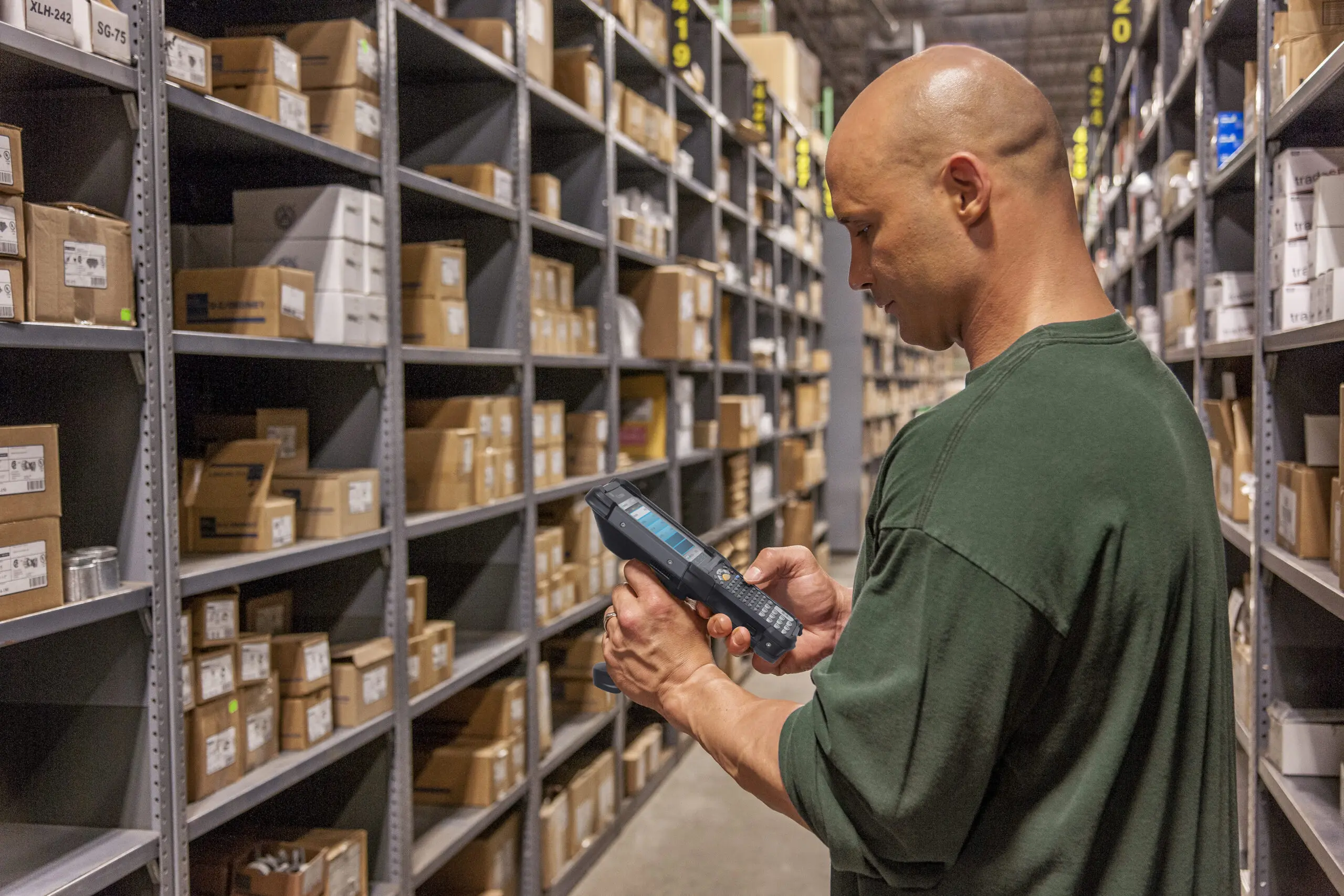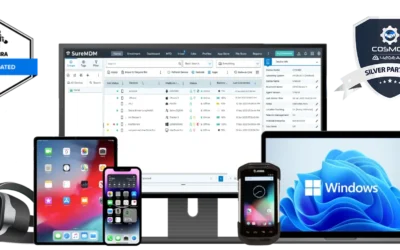The tools that workers use to perform critical tasks in a warehouse like putaway, picking, packing, and shipping can make or break operational success. When it comes to choosing the right technology for these tasks, the debate often centers around whether to use consumer-grade devices or invest in enterprise-class mobile computers and barcode scanners. While consumer devices may appear to be a more cost-effective option at first glance, a deeper dive reveals that enterprise-class devices are, in fact, the smarter long-term investment for any warehouse.
Purpose-Built for Demanding Environment
Enterprise-class devices are built to withstand the toughest warehouse conditions, minimizing downtime and ensuring continuous operation.
Unlike consumer-grade devices, which are primarily designed for general use in less demanding environments, enterprise devices are built to withstand the harsh conditions often found in warehouses and manufacturing facilities. These conditions include extreme temperatures, dust, moisture, the inevitable drops and bumps that occur during daily operations, and shift-after-shift usage among multiple users. The rugged construction of enterprise devices ensures they continue to function reliably under these conditions, minimizing downtime and the need for frequent repairs or replacements.
Enhanced Performance and Productivity
When it comes to performance, enterprise-class mobile computers and barcode scanners significantly outshine their consumer-grade counterparts. One of the key areas where this difference is most apparent is in mobile computing. Enterprise devices come equipped with advanced scan engines that are optimized for speed and accuracy. These scan engines can quickly and accurately read barcodes, even if they are damaged, poorly printed, or covered with shrink-wrap. This is a crucial advantage in a warehouse setting, where efficiency and accuracy directly impact the bottom line:
- Speed: Up to 60% faster task completion.
- Accuracy: Optimized scan engines for damaged or poorly printed barcodes.
- Reliability: Built for continuous, heavy-duty use.
In contrast, consumer-grade devices typically rely on camera-based scanning technology, which is slower and less reliable. Studies have shown that enterprise devices can be up to 60% faster in completing scan-intensive tasks, which translates to significant productivity gains. Faster scanning means that workers can process more orders in less time, reducing labor costs and improving overall throughput.
Ergonomics and Worker Comfort
Another critical factor that sets enterprise devices apart is their ergonomic design. Warehouse workers often spend long hours on their feet, performing repetitive tasks that can lead to physical strain and injury. Enterprise-class devices are designed with ergonomics in mind, featuring:
- Balanced weight distribution
- Comfortable grips and intuitive controls
- Reduced physical strain with natural hand positioning
For example, the placement of the scan button on the side of the device like the Zebra TC5x Series allows for easy, natural hand positioning, reducing the physical effort required to scan items. This design reduces the risk of repetitive strain injuries and enhances worker comfort, leading to higher productivity and job satisfaction.
Consumer-grade devices, on the other hand, are not necessarily designed with comfort in mind. For workers who are heading into a long shift of repetitive tasks, a lack of ergonomic features can lead to increased physical strain, resulting in fatigue, errors, and potentially higher turnover rates. Over time, the ergonomic shortcomings of consumer devices can have a negative impact on both worker health and overall operational efficiency.
Superior Battery Life
Battery life is another area where enterprise-class devices have a clear advantage. In a warehouse setting, workers need devices that can last through an entire shift without needing to be recharged. Enterprise devices are equipped with high-capacity batteries that are designed to support prolonged use, ensuring that workers can stay productive without interruption. Additionally, many enterprise devices offer hot-swappable batteries, allowing workers to quickly change batteries without shutting down the device, further minimizing downtime.
Consumer-grade devices often fall short in this area. Their batteries are typically not designed to support extended use in demanding environments, leading to frequent recharging and interruptions in workflow. This can result in lost productivity and frustration for workers who need to stay focused on their tasks.
Total Cost of Ownership (TCO)
Consumer-grade devices may seem like a more affordable option due to their lower initial purchase price. However, when considering the total cost of ownership (TCO), enterprise-class devices are often the more economical choice in the long run. The durability, reliability, and superior performance of enterprise devices mean they are less likely to require frequent repairs or replacements. Additionally, the productivity gains achieved through faster scanning, better ergonomics, and longer battery life contribute to a lower overall cost of operation.
TCO Advantages:
- Durability reduces repair and replacement costs.
- Enhanced productivity lowers operational expenses.
- Hot-swappable batteries minimize downtime.
Consumer-grade devices may incur higher long-term costs due to their susceptibility to damage, shorter lifespan, and lower productivity, making the initial savings on the purchase price quickly outweighed by the costs associated with device downtime, worker inefficiency, and increased repair or replacement needs.
Better Support and Integration
Enterprise-class devices also offer better support and integration with warehouse management systems (WMS) and other enterprise software, including our very own PortalTrack® inventory management software . Devices like mobile computers and rugged tablets are built to seamlessly integrate with the complex systems that warehouses rely on to manage inventory, track shipments, and optimize workflows. They often come with advanced management tools that allow IT teams to monitor, update, and troubleshoot devices remotely, ensuring that the entire fleet of devices is always up-to-date and functioning optimally.
Consumer-grade devices typically lack this level of integration and support. They may require additional software or workarounds to function within a warehouse’s existing systems, leading to inefficiencies and potential compatibility issues. Not to mention the fact that consumer devices are often subject to shorter support lifecycles, meaning that manufacturers may discontinue updates and support sooner than with enterprise devices, leaving businesses vulnerable to security risks and system incompatibilities.
Considering an Enterprise Device?
While consumer-grade devices might seem like an appealing option due to their lower upfront cost, the benefits of enterprise-class devices far outweigh the initial savings. For warehouse operations where reliability, efficiency, and long-term cost savings are critical, enterprise-class mobile computers, rugged tablets and industrial barcode scanners are a clear choice. Their durability, superior performance, ergonomic design, longer battery life, and better integration with enterprise systems make them indispensable tools for modern warehouse management.
Investing in enterprise-class devices ensures that your warehouse can operate at peak efficiency, reduce costs, and maintain a competitive edge in the market.
For more information, recommendations and examples of use cases, please contact us.


